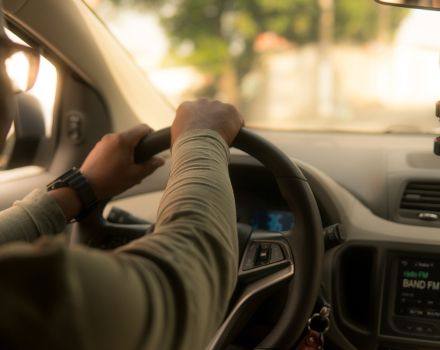21 June 2021
A brief overview of positive and negative national ride-hailing reforms in selected EU countries
Press Release
Move EU brings together the leading actors in the field of ride-hailing. Speaking with one voice, our members aim to foster sustainable deployment of on-demand mobility and new mobility services in the European Union. Move EU members connect passengers with licensed on-demand taxi and private hire vehicle (PHV) drivers, for the purpose of carrying passengers in return for payment. This document intends to provide a non-exhaustive overview of the diverse regulatory landscape in a select number of Member States.
The legal frameworks applying to ride-hailing platforms, operators and drivers in the EU differ significantly and thus create an uneven playing field. This makes it difficult for ride-hailing platforms to serve the growing demand for mobility services. It is therefore crucial to ensure flexible legal frameworks that apply to on-demand taxi and PHV mobility services.
In addition, several national or local regulations are evidently not aligned with the EU Green Deal objectives and have a preventable negative environmental impact. Ride-hailing is an alternative to the traditional concept of individual car ownership, by reducing one’s dependency on a personal car. However, the complex and often outdated regulatory environment prevents seizing the full potential of ride-hailing as one part of the urban mobility ecosystem.
Examples of regulatory obstacles
The ‘return to garage’ rule, currently foreseen in regulations in Germany, Belgium, Malta and Greece (among others), requires drivers to return empty to their main place of business after completing a trip before being able to serve a new customer. This requirement does not only create an unnecessary environmental footprint, but also creates an economic and logistic burden. Instead, Member States with balanced rules for taxi and PHV like Estonia, Slovakia or the Netherlands, do not have a ‘return to garage’ rule in place. In these countries taxis and PHV can compete under the same flexible conditions.
Imposing a minimum time length between the order and the arrival of the car is a strong hurdle to developing a viable ride-hailing activity. This is especially true in the region of Barcelona in Spain where the Generalitat de Catalunya has imposed a minimum waiting time of 15 minutes for the VTC category. Luxembourg’s new bill on taxis tabled in March 2021 could make it mandatory for ride-hailing (VLC) services to be ordered at least one hour in advance, making it almost impossible for the drivers to compete with other on-demand mobility services. Other provisions and regulations also de facto prohibit ride- hailing services to be offered to EU citizens. For instance, the minimum € 90 fare and 3-hour per journey rule in the Brussels-Capital Region is a strong hurdle to the development of ride-hailing (LVC) platforms operating there. This was especially evident in March 2021 when the Brussels-Capital Region authorities declared that PHV drivers would be banned from using smartphones to receive orders and that tens of drivers would be stopped and warned by the traffic police.
Moreover, quantitative restrictions on the number of licenses create artificial scarcity, limit competition with other mobility services and reduce incentives to innovate, impacting consumer choice and triggering increased prices. Such restrictions are in most cases set on a regional level, and apply in most cities and Member States. Limiting the number of licenses does not allow for matching the growing mobility demand and increases the price for passengers. In Spain, a quota of only 1 PHV license for 30 taxi licenses is in place, restricting both the taxis and PHVs, similarly other cities have restrictions in place.
Examples of favorable conditions
The Netherlands, Finland and Ireland have introduced regulations that foster competition, which allow drivers to operate as PHV and taxi drivers. Portugal has been able to implement a balanced regulation of the PHV (TVDE) sector.
To encourage competition, fares should be flexible, based on supply and demand. This ‘dynamic pricing’ is an essential part of the business model of Move EU members. EU Member States such as Austria, Poland, Romania, and Slovakia, allow drivers to use mobile apps instead of taximeters, whilst other countries clearly prohibit it. Static fare regulation, as it is mostly known today for taxi services, is a barrier to the innovative real-time allocation and pricing features of ride-hailing platforms. Differences also exist with regard to minimum fares or restrictions on offering flexible pricing models.
Pooling of on-demand vehicles offers benefits to passengers, drivers and societies. However, different regulatory regimes for shared shuttle services and ride-hailing, and sharing of on-demand taxis exist. In Italy, pooling of on-demand vehicles is generally not allowed but exceptions such as in Milan exist. Germany recently created a third licensing type for pooling services, but PHVs (Mietwagen) cannot offer shared rides, whilst taxis can under specific conditions only. This artificial differentiation for essentially the same services will not solve wider traffic problems. Sweden and Denmark instead allow pooling of on-demand vehicles. As cities are responsible to set pooling quotas, unambitious quotas enable pooling services to carry out single rides that traditionally would be served by taxi and PHV services. Instead of creating new license types, it is crucial to allow ride-pooling to all mobility service types (taxi, PHV) as this offers opportunities to reduce emissions and congestion, cut down on costs and foster a better distribution of urban space for all participants.
Conclusions and recommendations
Modernisation of rigid and outdated rules for on-demand taxi services and PHV is long overdue. Regulatory barriers and disproportionate requirements for on-demand taxi and PHV services harm EU passengers and drivers alike. These obstacles should be removed Europe-wide to boost the emerging single market for digitally-enabled on-demand mobility services. Hence, it is vital to ensure that flexible rules apply to on-demand taxi and PHV drivers, removing burdensome and inefficient rules, such as the ‘return to garage’ for PHVs, as well as allowing flexible pricing models for taxis for the benefit of consumers.
Therefore, we call on the European Commission to play an essential role in establishing clear, uniform rules for all on-demand passenger transport services operating in Europe. There is a strong need to encourage harmonised regulation amongst Member States and in so doing, setting up a minimum layer of regulation at EU level to avoid detrimental domestic regulation is the most appropriate way forward.
It is for this reason that we call on policymakers on all levels to:
- Ensure a level playing field and flexible legal frameworks to taxi and PHV on demand services;
- Discourage the application of minimum waiting times and ‘return to garage’ rule;
- Encourage dynamic pricing, discourage the application of a minimum fare or minimum journey time for a single journey;
- Remove quantitative restrictions on the number of licenses to enable competition.






